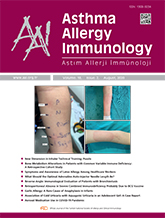


Objective: To identify the possible subcutaneous and peri/intraosseous injection risks with different needle lengths in adults using adrenaline autoinjectors (AAI) with different needle lengths. In addition, optimum needle lengths with the lowest injection failure risk were determined for both genders.
Materials and Methods: Skin-to-muscle distance (STMD) and skin-to-bone distance (STBD) were measured under minimal and maximum pressures at the anterolateral aspect of the thigh by ultrasound. Risks of subcutaneous injection, peri/intraosseous injection, and total events were calculated for both genders by taking a 15.2 mm needle length as reference for calculations. Possible subcutaneous injection and peri/intraosseous injection risks with different needle lengths were calculated and the most optimal needle lengths with the least total event risk were determined for each gender using different body mass index (BMI) threshold levels.
Results: A total of 208 adults (118 women, 90 men) with a mean age of 46.3±15.7 were enrolled. BMI had the highest correlation with all ultrasonographic measures for each gender. STMDmax of 45 women (38%) and one man (1.1%) were longer than 15.2 mm. For men, total event risk was similar (3.3%) with needle lengths ranging from 12 to 18 mm. For women, considering two different BMI threshold levels with two different needle lengths (20 mm for 28 kg/m2 and 26 mm for 32 kg/m2) reduced total event risk to 6.7% for both BMI thresholds.
Conclusion: The risk for inadequate intramuscular delivery is higher in women, especially those with higher BMI. Individualization of AAI needle lengths according to certain BMI values can improve the outcome, especially for obese women.